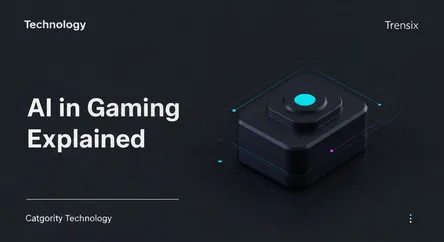Technology
AI in Gaming Explained

Discover how Artificial Intelligence is revolutionizing video games, from smarter NPCs to dynamic, procedurally generated worlds. Learn why it's trending.
What is it?
AI in gaming refers to the use of artificial intelligence to create responsive, adaptive, and intelligent behaviors in non-player characters (NPCs) and to generate game content dynamically. Beyond just controlling enemy movements, it encompasses complex decision-making, learning from player actions, and procedural content generation (PCG) for creating vast, unique levels, items, and quests. Core techniques include pathfinding algorithms like A*, behavior trees for complex decision logic, and increasingly, machine learning to create opponents that adapt and evolve.
Why is it trending?
Advances in computing power and machine learning have pushed gaming AI far beyond its scripted origins. Developers are now leveraging sophisticated AI to create more believable and unpredictable worlds. Generative AI tools are accelerating development by creating assets and environments, while technologies like NVIDIA's DLSS use AI to upscale graphics for better performance. The desire for more immersive, replayable, and personalized experiences is driving innovation, making AI a central pillar of modern game design.
How does it affect people?
For gamers, advanced AI leads to more engaging and challenging gameplay. NPCs can act as intelligent allies or cunning foes, creating dynamic stories that react to player choices. Games can now adapt their difficulty in real-time or generate endless new content, enhancing replay value. For developers, AI tools streamline complex tasks like animation and level design, reducing development time and costs. This allows smaller studios to create larger, more ambitious games and enables developers to focus on creativity.